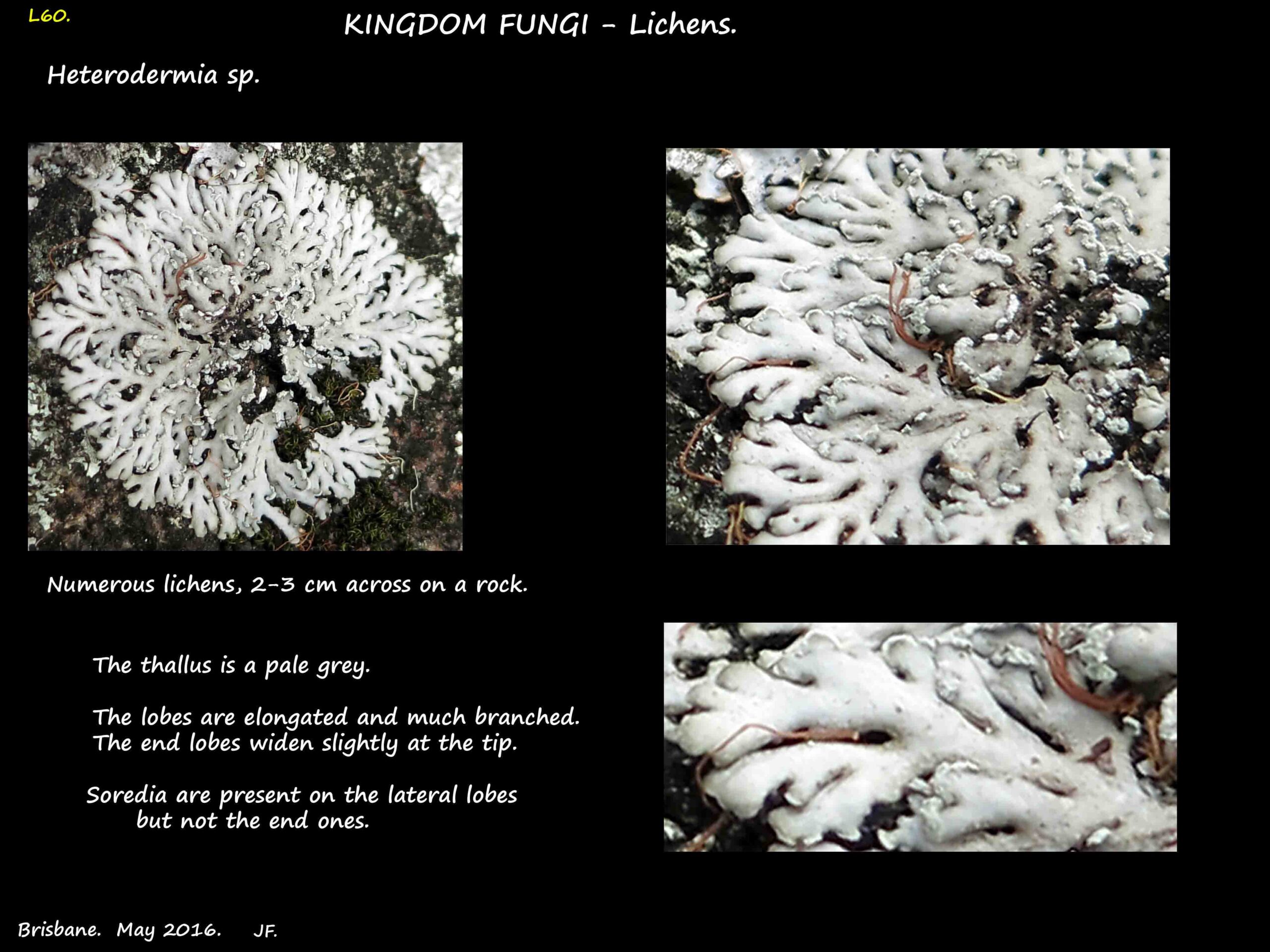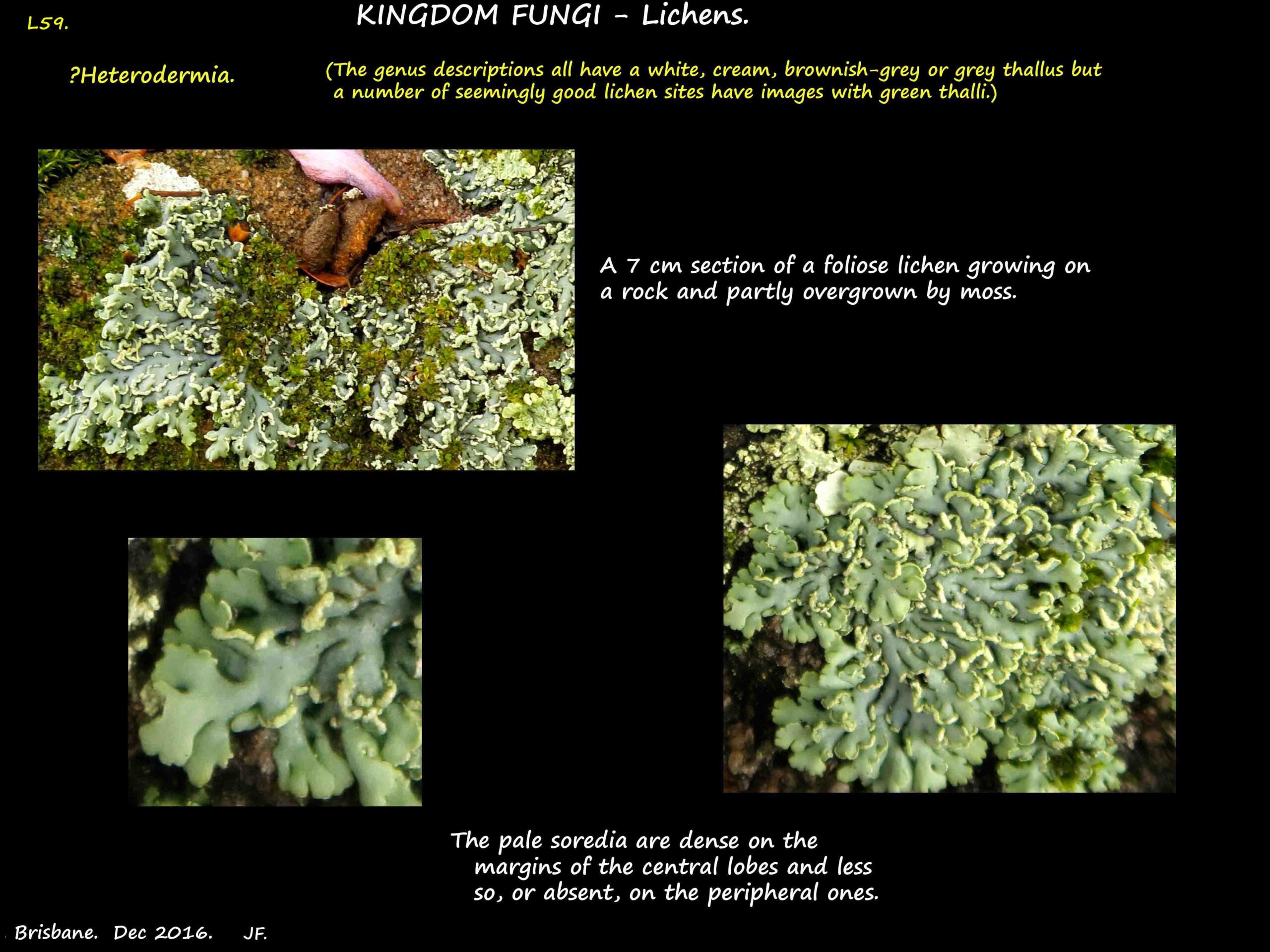Heterodermia.
Ascomycota > Lecanoromycetes >Teloschistales > Caliciaceae > Physciaceae.
There are 7 genera in the Physciaceae family – Anaptychia, Heterodermia, Hyperphyscia,
Phaeophyscia Physcia, Physconia and Rinodina.
Heterodermia contains about 80 species.
A foliose lichen, round or irregular in shape, mostly 2-3 cm across but up to 4 cm.
Adjacent ones often coalesce to form colonies up to 15 cm across.
It is firmly or loosely attached to the substrate which may be rocks or tree trunks.
The upper surface is white, cream, brownish-grey or greyish.
The lobes, up to 4 mm wide, are elongated and branch repeatedly, sometimes like a fan.
The marginal lobes may be separate or touching, flat on the substrate or slightly raised.
The end lobes widen towards the tips.
Dark marginal cilia, simple or branched, may be present.
The lower surface can be pale to dark brown or white and with pale yellow to orange spots.
There are a few scattered, short, thick, occasionally branched rhizines which are usually black.
The soredia are abundant on the lateral lobes but not the end ones.
Apothecia, up to 8 mm wide with a brown or blackish-brown disc, are rare.
J.F.



